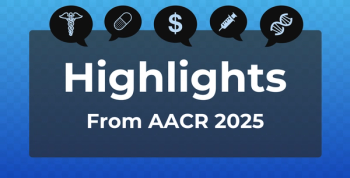
Report Requested by FDA Outlines "State of the Science" on Chronic Pain and Opioid Abuse
In response to a request from the FDA, the National Academies of Sciences, Engineering, and Medicine has issued a report outlining the current body of research on chronic pain and opioid use disorder, including recommendations on what steps the regulatory agency can take in response to the ongoing epidemic.
In response to a request from the FDA, the National Academies of Sciences, Engineering, and Medicine (NASEM) has issued a report outlining the current body of research on chronic pain and opioid use disorder, including recommendations on what steps the regulatory agency can take in response to the ongoing epidemic.
The
In the
- Restricting supply through proper disposal
- Influencing prescribing practices with updated clinician education, insurance coverage policies, and prescription drug monitoring databases
- Reducing demand by changing patients’ expectations of receiving opioids for pain
- Reducing harm via expanded access to naloxone and medication-assisted treatment for opioid use disorder.
Additionally, the report called for more pain research and intensified governmental efforts to crack down on the illicit opioid market, but it also had some recommendations for the FDA. One notable idea was that the review and approval process for opioid medications should take a systemic approach to analyze the broad-scale public health benefits and risks of these drugs, instead of assessing new medications on a product-specific basis as it normally would. The authors called on the FDA to be more transparent in how it regulates opioids, strengthen its oversight of opioids after their approval, and undertake a full review of all opioids currently approved or on the market.
“This plan aims to help the millions of people who suffer from chronic pain while reducing unnecessary opioid prescribing,” said Richard J. Bonnie, chair of the committee that drafted the report, in
In
Gottlieb also discussed the agency’s intentions to update prescriber education to include broader information on pain management and opioid safety. This training will now be available to non-physician professionals, like nurses and pharmacists, and the FDA is considering making such education mandatory.
In the statement, the commissioner wrote that the agency “strongly supports a transition from the current market dominated by conventional opioids to one in which the majority of opioids having meaningful abuse-deterrent properties.” He also noted the importance of developing new, less addictive treatment options for patients with chronic pain.
Despite his praise for the FDA’s ongoing and future efforts, Gottlieb acknowledged that these initiatives alone will not be sufficient in combating a public health emergency that calls for an “all-of-the-above approach.”
“As underscored in the NASEM report, the scope of this epidemic is so large, it’s going to require a coordinated effort that includes federal, state, and local partners to properly address its continued destruction of individual lives and families,” Gottlieb concluded.
Newsletter
Stay ahead of policy, cost, and value—subscribe to AJMC for expert insights at the intersection of clinical care and health economics.









































